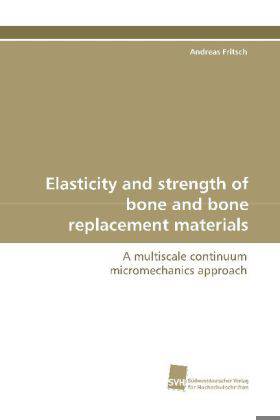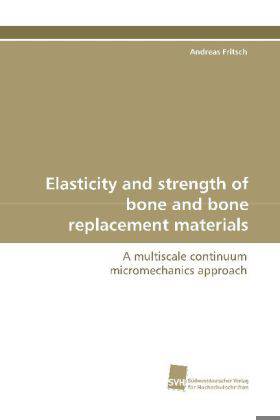
- Afhalen na 1 uur in een winkel met voorraad
- Gratis thuislevering in België vanaf € 30
- Ruim aanbod met 7 miljoen producten
- Afhalen na 1 uur in een winkel met voorraad
- Gratis thuislevering in België vanaf € 30
- Ruim aanbod met 7 miljoen producten
Zoeken
Elasticity and Strength of Bone and Bone Replacement Materials
A multiscale continuum micromechanics approach
Andreas Fritsch
Paperback | Duits
€ 78,95
+ 157 punten
Omschrijving
Strength of bone and bone replacement materials are predicted, from their composition and microstructure, by means of multiscale models. The theoretical developments are supported by comprehensive experiments on cortical bone and on biomaterials made of hydroxyapatite, glass-ceramic, and titanium. Brittle failure of interfaces between isotropic, spherical crystals is investigated as well as an alternative approach using crystal needles for hydroxyapatite biomaterials. A model for cortical bone strength is presented, based on a new vision on bone material failure: mutual ductile sliding of hydroxyapatite mineral crystals along layered water films is followed by rupture of collagen crosslinks. It can satisfactorily predict the strength of different bones from different species, on the basis of their mineral/collagen content, their porosities, and the mechanical properties of hydroxyapatite and (molecular) collagen.
Specificaties
Betrokkenen
- Auteur(s):
- Uitgeverij:
Inhoud
- Aantal bladzijden:
- 188
- Taal:
- Duits
Eigenschappen
- Productcode (EAN):
- 9783838105079
- Verschijningsdatum:
- 24/04/2009
- Uitvoering:
- Paperback
- Formaat:
- Trade paperback (VS)
- Afmetingen:
- 152 mm x 229 mm
- Gewicht:
- 258 g

Alleen bij Standaard Boekhandel
+ 157 punten op je klantenkaart van Standaard Boekhandel
Beoordelingen
We publiceren alleen reviews die voldoen aan de voorwaarden voor reviews. Bekijk onze voorwaarden voor reviews.











